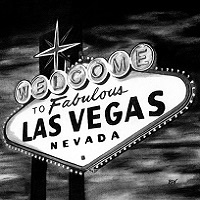A recent visit to Sin City reveals signs of trouble. The falling Vegas tourism industry is resulting in empty restaurants and hotels, even amid high prices. The conditions suggest that the booming post-pandemic rebound may be cooling off… and it hasn’t been pretty. In several high-profile resorts, tables stood unoccupied during prime dinner hours. Guests and staff alike noted that what should have been bustling dining rooms looked quiet and underused. The reduction in foot traffic was most visible in midweek slots, when fewer convention and leisure travelers were present.
At the same time, the cost of a trip to Las Vegas has escalated sharply. Hotel rates, resort fees, dining charges, and entertainment costs all pushed upward. Some travelers shared that rates had doubled or even tripled compared to just a few years ago, depending on the property and location within the Strip. Hidden fees and surprise add-ons further aggravated the experience, making budgets tight even for those prepared to spend.
Analysts and travel insiders say the combination of soaring costs and dwindling demand points to weakening momentum and falling Vegas tourism. In recent months, some hotel occupancy statistics show declines, particularly when compared to recovery levels earlier this year. The drop is more pronounced in non-weekend and off-peak periods, when travelers with flexibility choose alternatives or postpone trips altogether.
A cause frequently cited is this: with more options available, consumers are becoming more price-sensitive. Many visitors are choosing destinations where their dollars can stretch further. Others are delaying travel plans or opting for shorter stays. Luxury resorts and high-end properties, which leaned heavily on premium pricing, are especially vulnerable to sudden shifts in demand.
Meanwhile, smaller hotels, local enterprises, and mid-range options are scrambling to adapt. Some are offering promotional packages, added perks, or discounts to draw guests. Restaurants in resorts have responded by scaling back menus or reducing hours. Several venues disclosed that they were trying to maintain minimum staffing levels to reduce overhead amid reduced revenue expectations.
There is also concern among industry observers about the ripple effects. The Las Vegas ecosystem is deeply interconnected: fewer tourists mean less revenue not just for hotels and restaurants, but for entertainment shows, tour operators, transport services, and retail shops. Workers in service sectors may face reduced hours or furloughs if the trend deepens.
Despite these challenges, officials and business leaders remain cautious but hopeful. They emphasize that long-term tourism fundamentals—such as Las Vegas’s global brand, entertainment offerings, and convention business—still provide resilience. However, they acknowledge that relying solely on brand strength will not protect the city from the consequences of falling Vegas tourism if the pricing mismatch remains unaddressed.
Observers suggest that the path forward will hinge on re-calibrating value perceptions. To lure back cautious travelers, Las Vegas may need to temper price hikes, improve transparency around fees, and offer more inclusive, compelling packages. The goal would be to restore the balance between premium experience and perceived affordability.
In the short term, the city’s fortunes now hinge on whether operators can respond swiftly and whether visitors perceive the destination once again as worth the cost. The downturn in crowds and rising costs together signal a moment of reckoning for Las Vegas’s tourism model — and a test of how much elasticity the market still allows.



